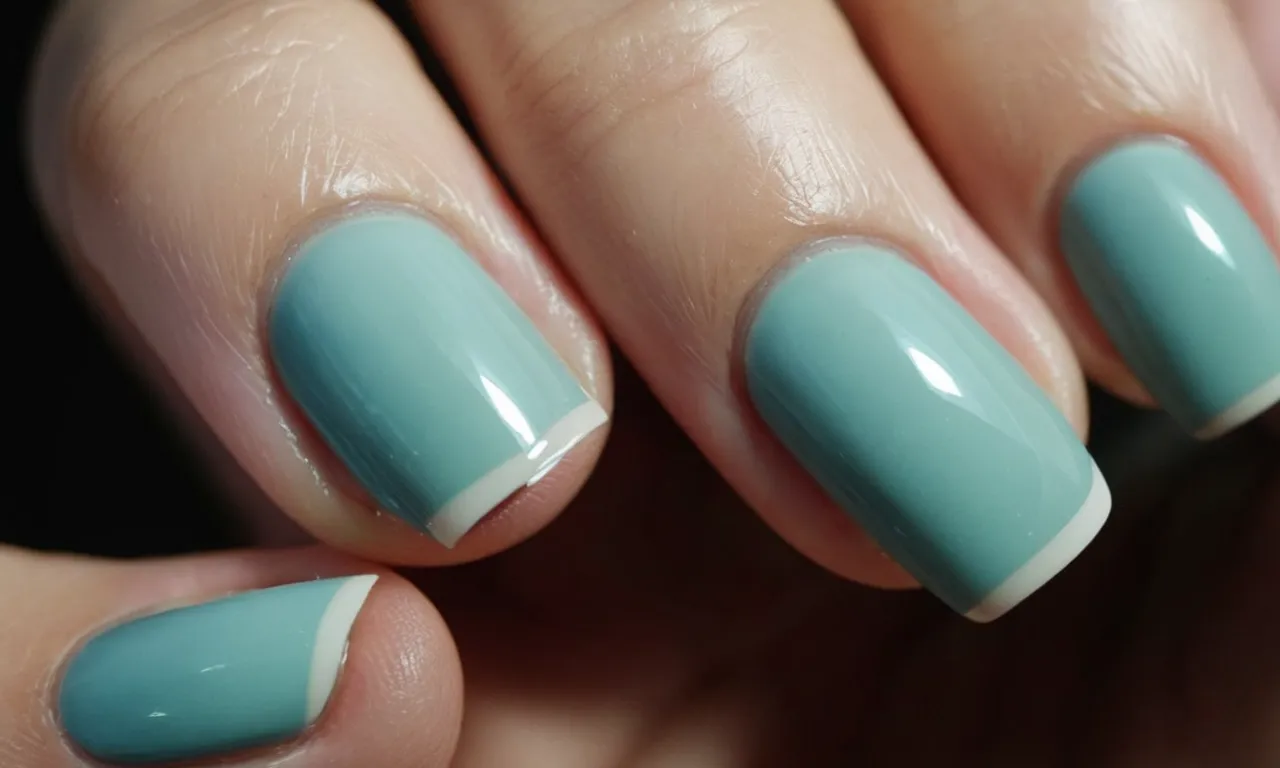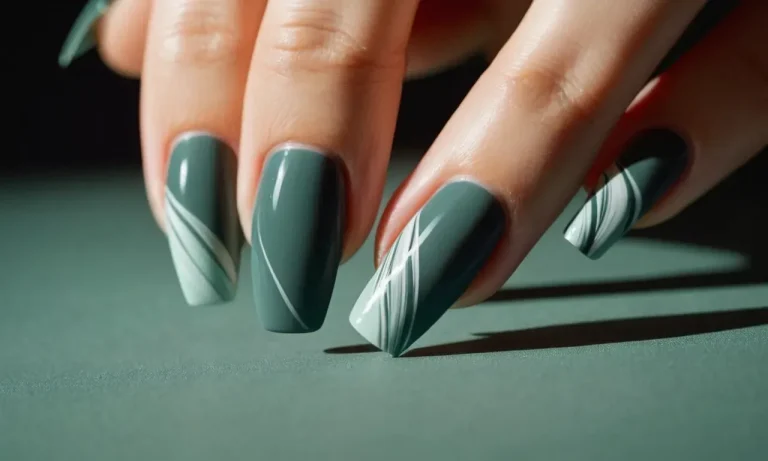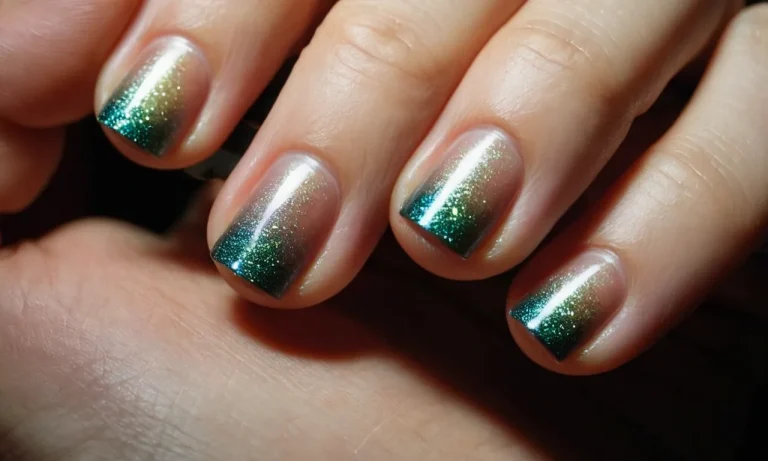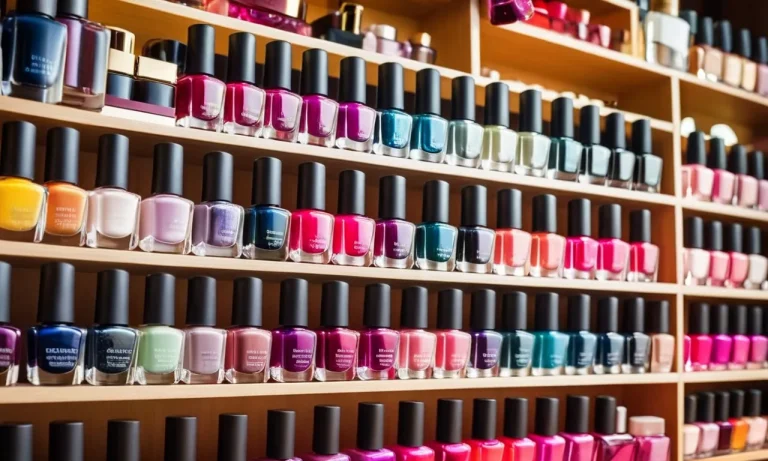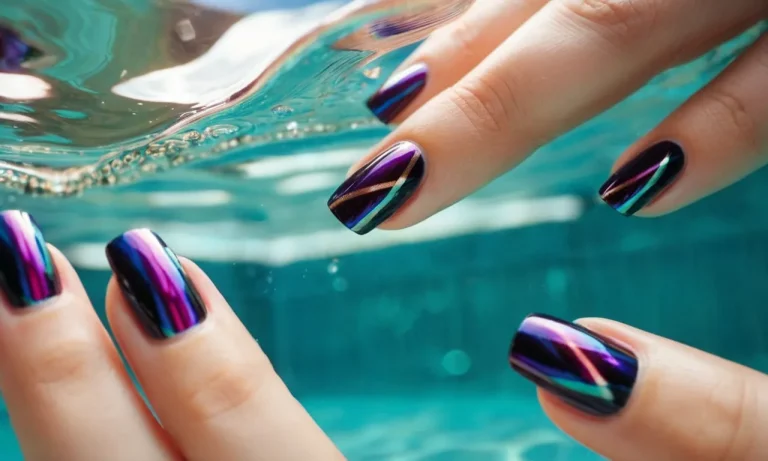Why Do I Have Uneven Free Edges On My Nails And How Can I Fix Them?
If you look down at your nails and notice that some have uneven, ragged edges along the tips, you’re not alone. Many people deal with uneven free edges on their nails. These uneven edges can snag on fabrics, feel rough to the touch, and just generally look unkempt.
In this comprehensive guide, we’ll discuss the common causes of uneven nail edges and how you can get your nails looking tidy and even again. With the right information and tools, you can fix uneven nails and prevent the problem from returning.
We’ll provide tips for filing, buffing, and maintaining nail edges so they grow out straight and smooth. Let’s get into it!
What Causes Uneven Nail Edges?
Normal wear and tear
Our fingernails and toenails face a lot of abuse on a daily basis. From using our hands for various tasks, typing on keyboards, exposure to water, cleaning products and more – there are many factors that can contribute to uneven edges.
Normal everyday use causes layers of the nail to peel or wear unevenly over time, particularly at the tips and sides. This can lead to snagging, splitting, fraying or general roughness. Fingernails tend to show more obvious wear and tear than toenails.
Nail biting/picking
Nail biting, also called onychophagia, is perhaps the number one cause of uneven, ragged nail edges. Simply put – repeatedly tearing off bits of nail with your teeth leads to damage.
Likewise, picking at nails can pull up layers or break pieces unevenly. These harmful habits disrupt growth and normal keratinization, as explained by the American Academy of Dermatology.
Damaged edges caused by these behaviors tend to look very rough or shredded. The more severe the biting/picking, the more uneven and distorted the nail perimeter becomes over time.
Improper nail care
Believe it or not, we sometimes accidentally cause uneven edges ourselves by improper trimming, filing or manipulation – it’s easy to get overzealous!
- Cutting nails too short can lead to ingrown nails or leave sensitive nail beds exposed.
- Using abrasive files or buffers with too much lateral force tears layers unevenly.
- Vigorous pushing back of cuticles can damage the nail matrix where growth originates.
- Harsh chemical removers or glue from artificial nails can thin fragile nail plates.
Thankfully such uneven edges from self-grooming are usually temporary. Allowing nails to regrow while avoiding further manipulation helps normalize appearance.
| Cause | Contributing Factors | Appearance |
|---|---|---|
| Wear & tear | Everyday use, exposure to cleaning products, water, fragrances etc | Fraying, peeling, splitting |
| Nail biting/picking | Compulsive habits, stress/anxiety | Ragged, shredded edges |
| Over-grooming | Aggressive trimming, improper filing, cuticle removal | Rough, thin, distorted |
How to Fix Uneven Nail Edges
Start by filing nails straight across
Filing your nails straight across creates an even edge and prevents splits and cracks from getting worse. Use a nail file to gently file in one direction, starting at the outer corners of the nail and working toward the center.
File gently and avoid sawing back and forth, which can further damage the nail. Filing often helps strengthen nails over time.
Use a buffer block or buffing file
After filing, gently buff the nails. Buffing smooths and seals the nail layers, creating a polished look. Use a buffer block or an emery board with fine grit designed for buffing. Gently buff in one direction across the nail. Don’t buff too aggressively or you can thin the nails.
Buffing a couple times a week helps maintain strong, healthy nails.
Moisturize nails and cuticles
Dry, brittle nails are more prone to cracking and peeling. Apply a rich moisturizer or cuticle oil daily to condition the nails and cuticles. Massaging the oil into the nail beds strengthens nails and stimulates growth.
Look for moisturizers with vitamins and oils like vitamin E, coconut oil, and jojoba oil. Healthy, hydrated nails resist damage.
Consider supplements for stronger nails
If your nails seem weak despite good care, supplements may help. Biotin is essential for healthy keratin production and is commonly used to strengthen brittle nails. Most experts recommend 2.5 mg of biotin per day. Vitamin E, calcium, and omega-3s also support nail health.
Check with your doctor before starting supplements, especially if you take other medications.
Get regular manicures
See a professional manicurist every 2-4 weeks for shaping, buffing, and cuticle care. They can expertly trim and file nails to prevent uneven edges. Regular manicures keep nails looking their best. Bring your own tools if you have concerns about sanitation.
Schedule appointments when business is slower to allow time for careful shaping. Well-groomed nails stay chip-resistant between appointments.
Preventing Uneven Nails in the Future
Avoid excessive filing at the edges
Filing too aggressively at the free edges can lead to thinning and weakness, causing peeling and cracking over time. When filing nails, use light, smooth strokes going in one direction instead of sawing back and forth aggressively.
Limit filing to once or twice a week at most to avoid over-thinning the nails (Melms, 2022). This helps maintain strength and thickness at the edges so they grow out evenly.
Use a glass file
Glass nail files are more gentle on nails than traditional emery boards. The finely ground glass smoothly seals the edge without fraying or thinning the nail layers. Using a glass file helps prevent cracking and peeling that can lead to uneven edges as the nails grow out.
Opt for a file with a fine grit of 100/180 for best results.
Apply cuticle oil daily
Hydrating nails and cuticles is key for strong, healthy growth. Cuticle oil penetrates to nourish the nail beds, helping prevent cracking and peeling at the edges (AAD, 2023). Apply oil daily focusing on the base and edges of nails. Vitamin E and jojoba oils are great options.
This lubricates the surrounding skin to help nails grow out smoothly without catching and tearing.
Wear gloves for wet work
Protect nails from excessive moisture exposure which can lead to warping, brittleness, and cracking as the free edges grow out. According to dermatologists, wearing rubber gloves when washing dishes, cleaning, or performing other wet work allows nails to stay smooth, hydrated and less prone to uneven edges (Nikpour, 2023).
The American Academy of Dermatology recommends cotton-lined rubber gloves to prevent overexposure.
Consider acrylics or gel manicure
Getting regular acrylic nail enhancements or gel manicures is an option if uneven nails are a constant problem. These services reinforce and protect the natural nails with an overlay of product that creates a smooth, even edge as the enhancement grows out with your natural nail.
This helps camouflage and prevent uneven edges while allowing nails to grow underneath, according to nail care experts (Essix, 2021). However, improper application and removal can damage nails over time.
Conclusion
Uneven nail edges are a common nuisance but thankfully one that can be corrected. With the right filing techniques and nail care regimen, you can restore neat, smooth edges and prevent the problem from recurring.
Pay close attention to how you file nails, keep them moisturized daily, and consider salon treatments like acrylics or gels if you’re prone to uneven edges. Your nails will look noticeably better and feel stronger and smoother to the touch.
With a little TLC for your tips, you can rock gorgeous, evenly edged nails!

